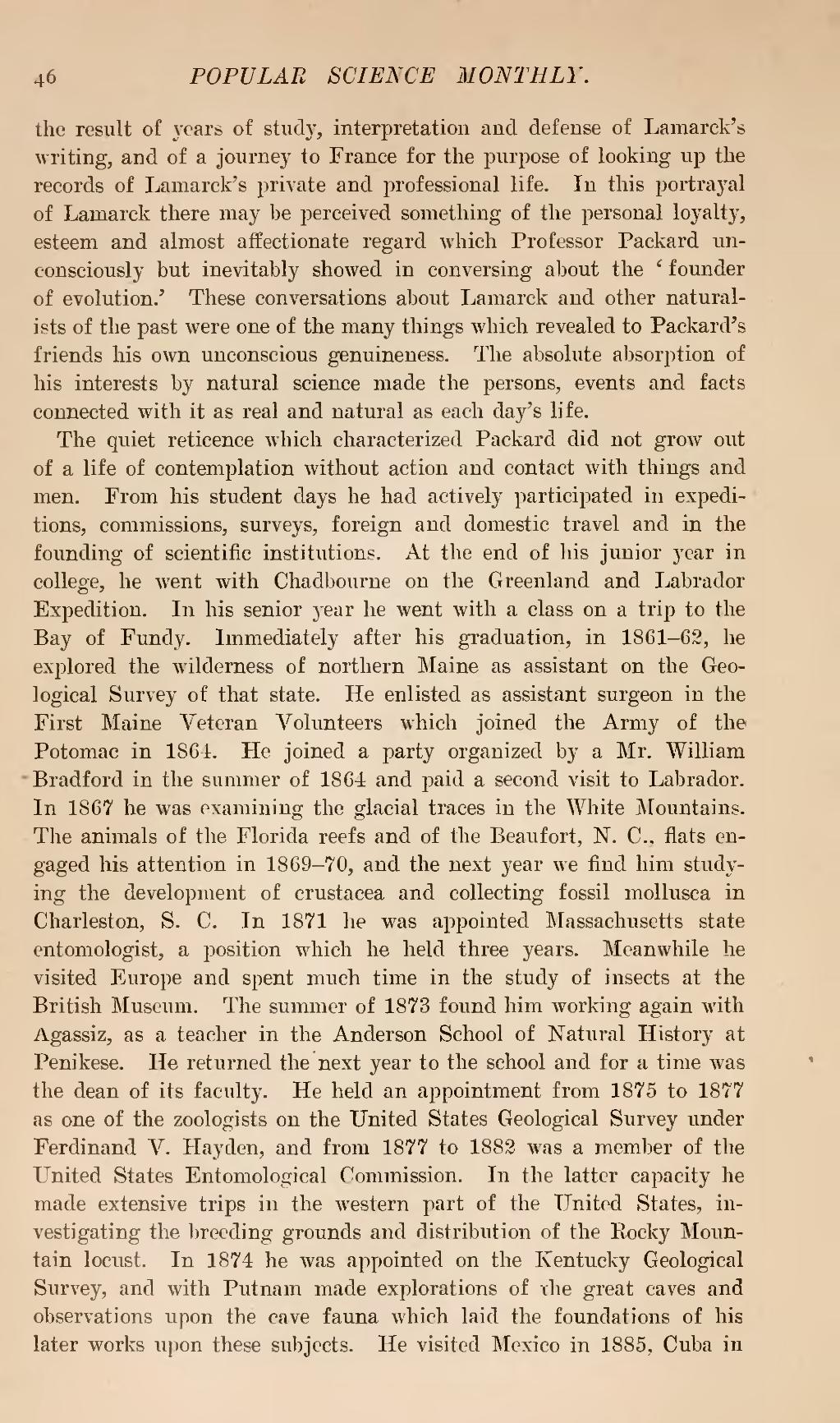the result of years of study, interpretation and defense of Lamarck's writing, and of a journey to France for the purpose of looking up the records of Lamarck's private and professional life. In this portrayal of Lamarck there may be perceived something of the personal loyalty, esteem and almost affectionate regard which Professor Packard unconsciously but inevitably showed in conversing about the 'founder of evolution.' These conversations about Lamarck and other naturalists of the past were one of the many things which revealed to Packard's friends his own unconscious genuineness. The absolute absorption of his interests by natural science made the persons, events and facts connected with it as real and natural as each day's life.
The quiet reticence which characterized Packard did not grow out of a life of contemplation without action and contact with things and men. Prom his student days he had actively participated in expeditions, commissions, surveys, foreign and domestic travel and in the founding of scientific institutions. At the end of his junior year in college, he went with Chadbourne on the Greenland and Labrador Expedition. In his senior year he went with a class on a trip to the Bay of Fundy. Immediately after his graduation, in 1861-62, he explored the wilderness of northern Maine as assistant on the Geological Survey of that state. He enlisted as assistant surgeon in the First Maine Veteran Volunteers which joined the Army of the Potomac in 1861. He joined a party organized by a Mr. William Bradford in the summer of 1864 and paid a second visit to Labrador. In 1867 he was examining the glacial traces in the White Mountains. The animals of the Florida reefs and of the Beaufort, N. C., flats engaged his attention in 1869-70, and the next year we find him studying the development of Crustacea and collecting fossil mollusca in Charleston, S. C. In 1871 he was appointed Massachusetts state entomologist, a position which he held three years. Meanwhile he visited Europe and spent much time in the study of insects at the British Museum. The summer of 1873 found him working again with Agassiz, as a teacher in the Anderson School of Natural History at Penikese. He returned the next year to the school and for a time was the dean of its faculty. He held an appointment from 1875 to 1877 as one of the zoologists on the United States Geological Survey under Ferdinand V. Hayden, and from 1877 to 1882 was a member of the United States Entomological Commission. In the latter capacity he made extensive trips in the western part of the United States, investigating the breeding grounds and distribution of the Rocky Mountain locust. In 1874 he was appointed on the Kentucky Geological Survey, and with Putnam made explorations of the great caves and observations upon the cave fauna which laid the foundations of his later works upon these subjects. He visited Mexico in 1885, Cuba in
